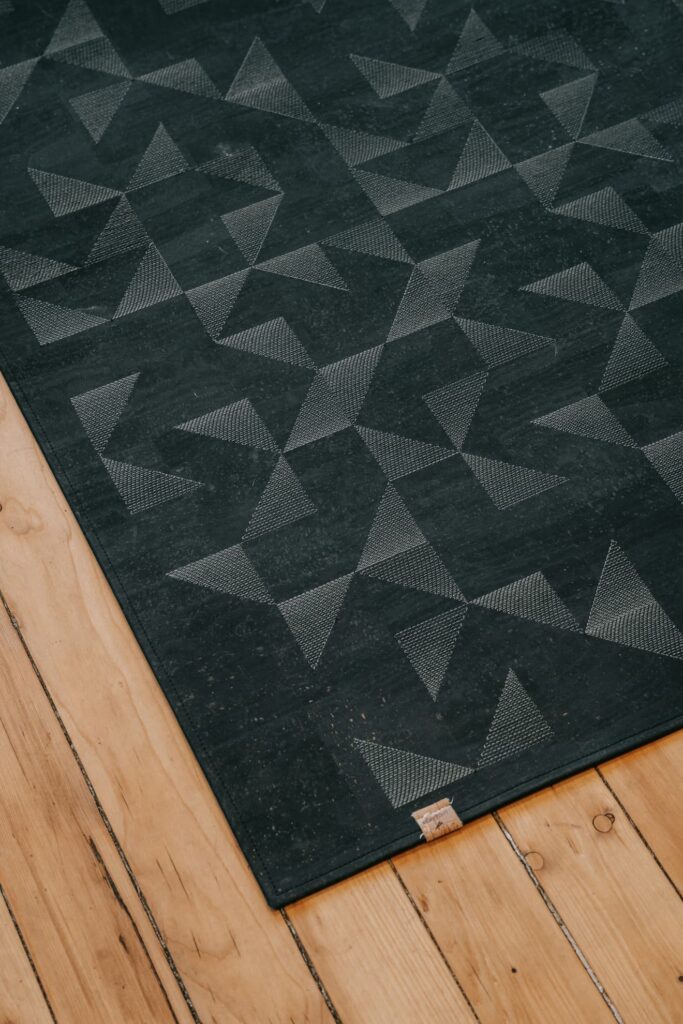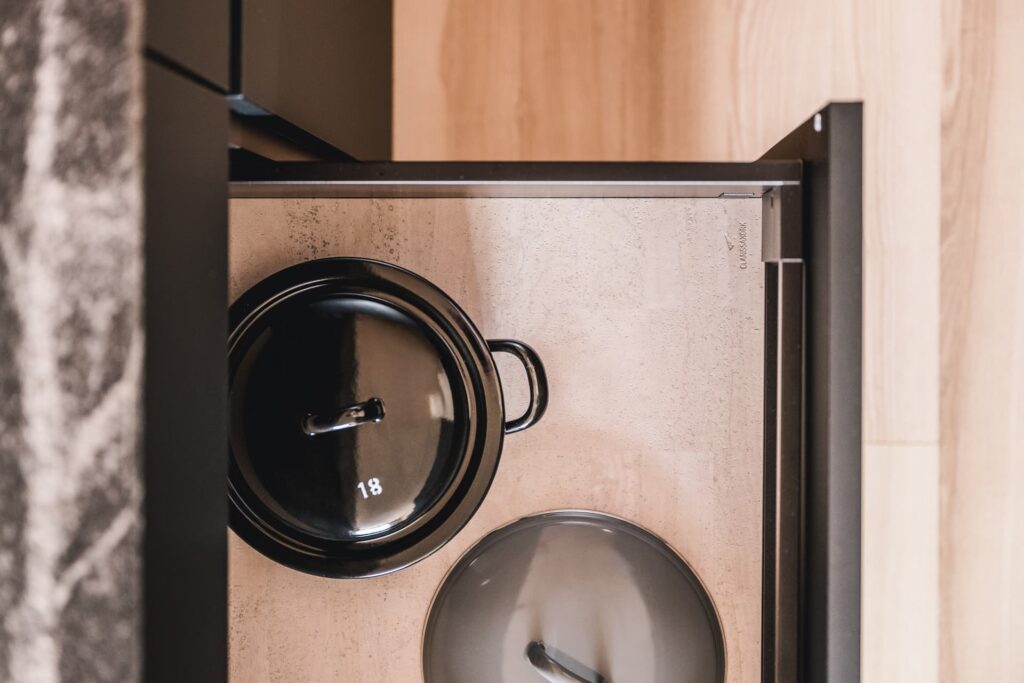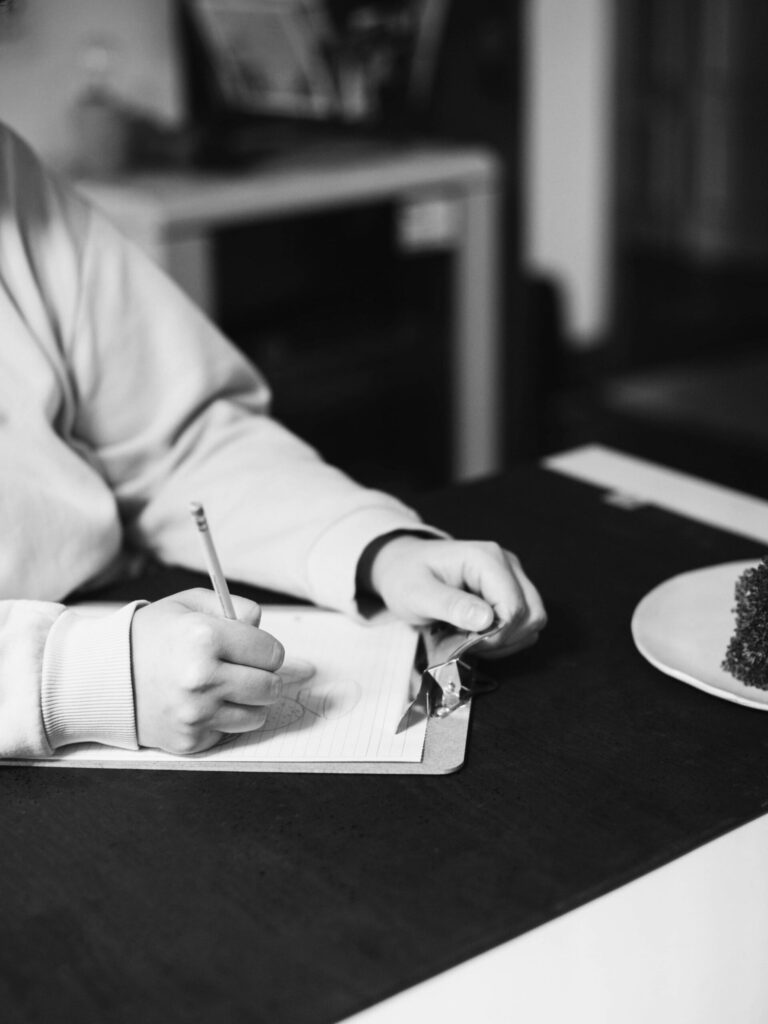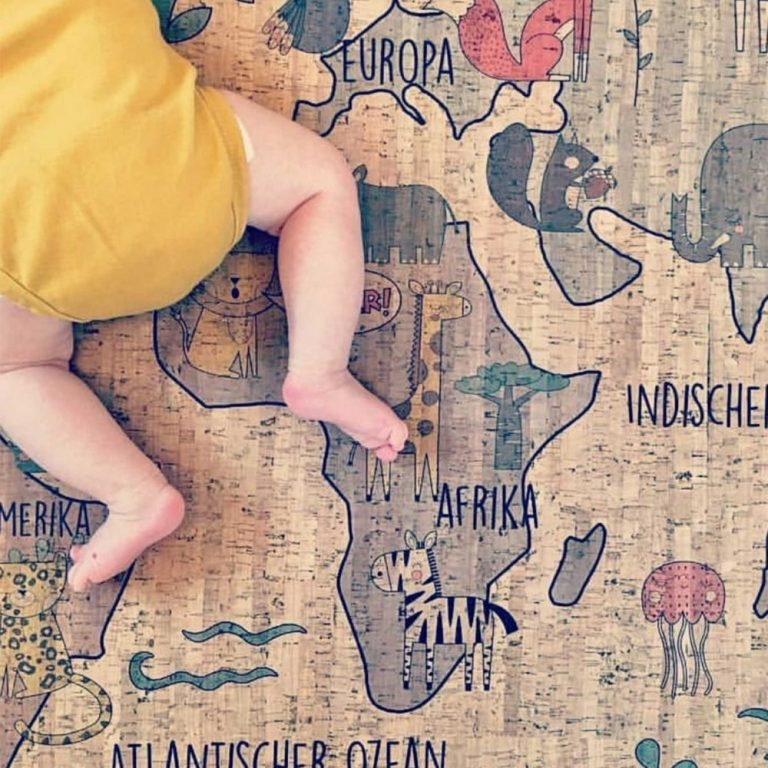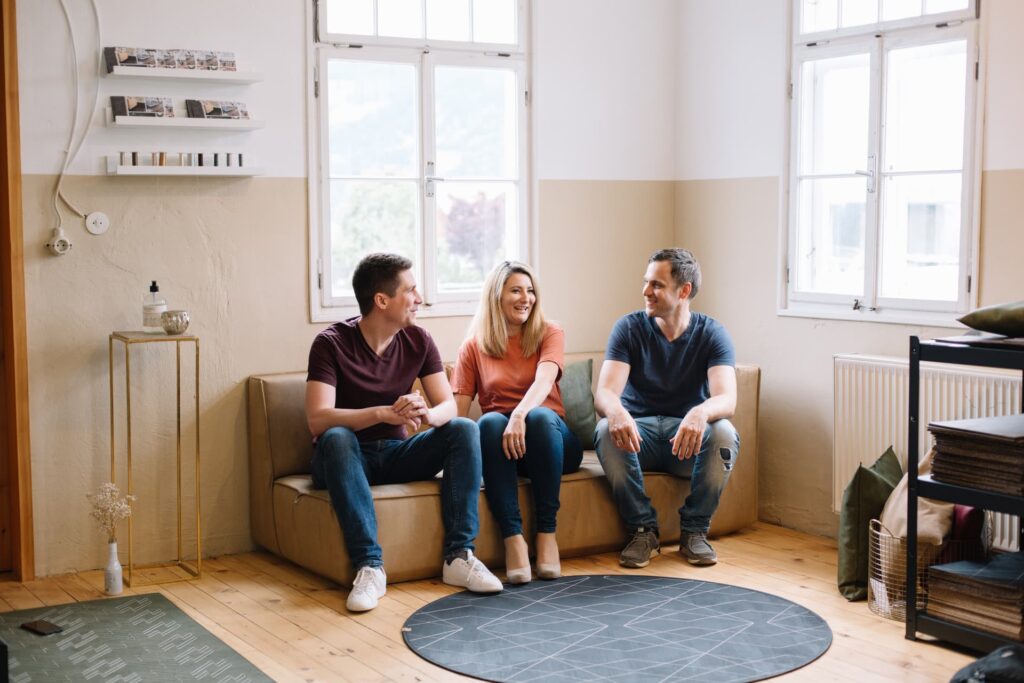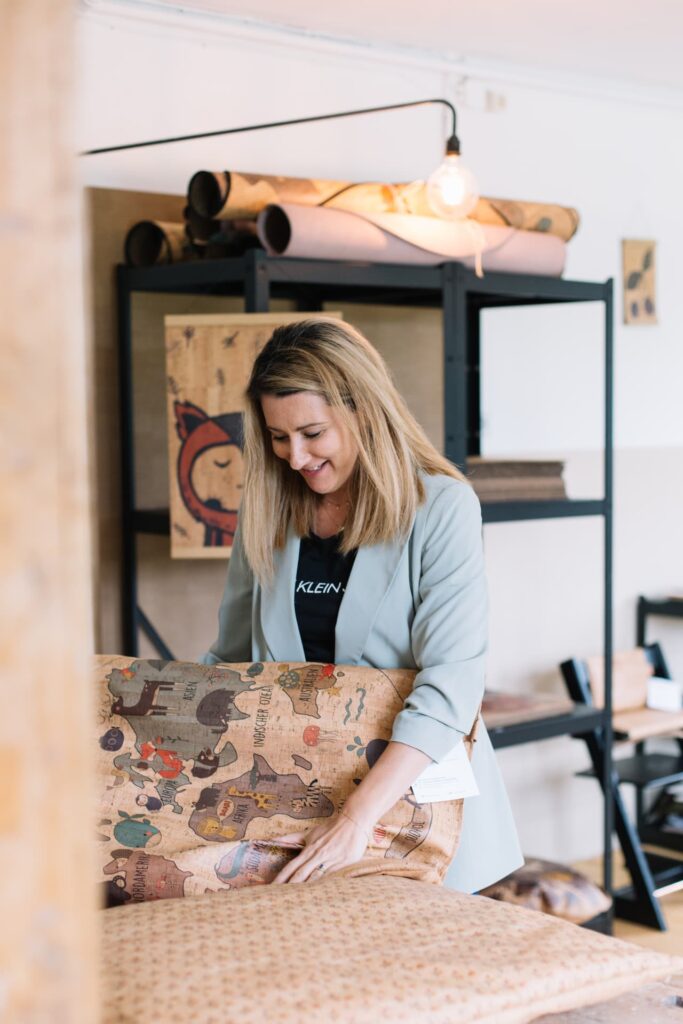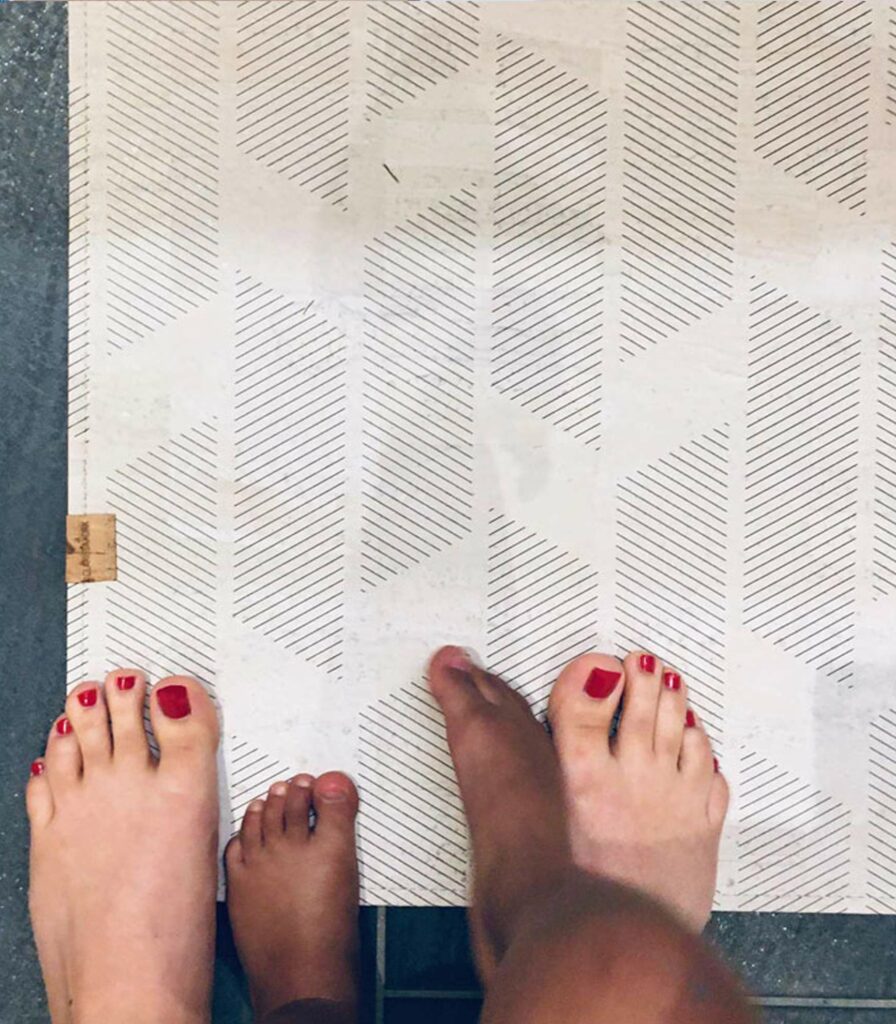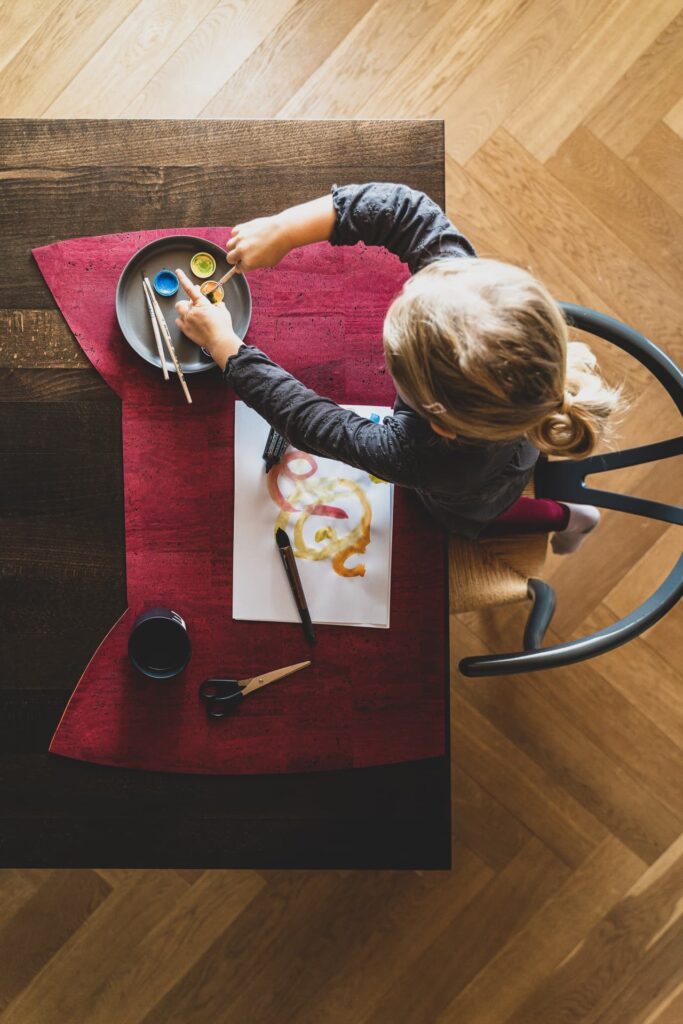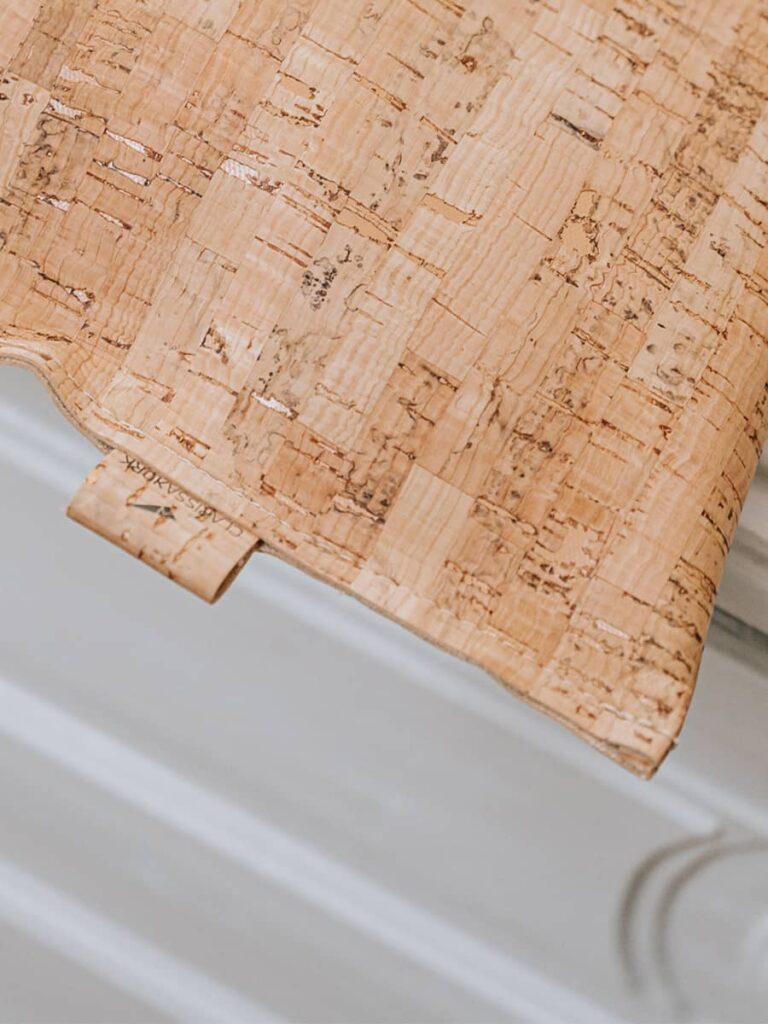My son was a so-called spit-up kid, at least in phases. In other words, the standard cotton crawling blanket was often stained. Then we have a cat who also liked the blanket - so the blanket was in the washing machine more than on the floor - not exactly environmentally friendly for that reason alone. Well, and once the blanket was on the ground, Mini-Me tried to move forward. Unfortunately, this doesn't work - crawling blankets are generally not non-slip. And so he gave free rein to his anger early on. My first prototype was an embroidered cork rug. I put it through its paces in the bathroom. As a mom, you take your child everywhere with you. So he lay on the cork carpet in the bathroom and - of course he spat again - but wipe over it once and everything was gone.
Then I started to think about it more intensively. And realized that this is not the only reason why cork is perfect for children. It remains flat on the ground when they try to crawl. The carpet doesn't fluff either, and bacteria don't stand a chance with cork. Perfect then. No other material offers this many advantages.
- Cork rug
-
Configurator
-
Table & Kitchen
-
Baby & Kids
BabyAccessoires
-
Lifestyle & Accessoires
-
Presents
Presents by categoryBestsellerCustomisable gifts
-
discover more 🖤
FAQBonusclubAugmented Reality
